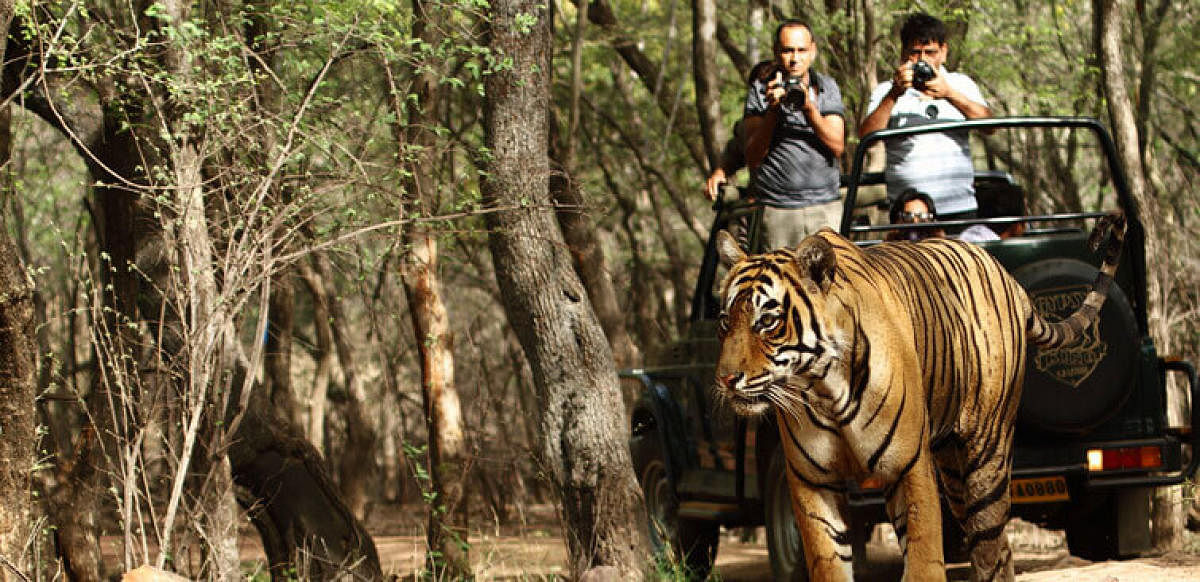India harbours 60% of the current global free-roaming tiger population. But this population suffers from several man-made threats like poaching, habitat loss and fragmentation. It has lost more than 95% of its global historical home range, and its extant population exists in fragmented habitats.
A new study, published in Conservation Physiology from Dr G Umapathy’s group at Laboratory for the Conservation of Endangered Species (Lacones) of the Centre for Cellular and Molecular Biology (CCMB) in Hyderabad, reveals the existence of tourism-induced stress in tigers in two major tiger reserves in the country.
The study examines the relationship between human disturbances and physiological stress levels in two tiger populations in central India, in Bandhavgarh (BTR) and Kanha Tiger Reserve (KTR), Madhya Pradesh.
The researchers assessed the concentrations of fecal glucocorticoid metabolite (fGCM)—a marker of stress—in individual tigers.
Chronically elevated glucocorticoid levels can negatively impact growth, reproductive success, immunity, and cause muscular atrophy.
The study team had collected a total of 341 fecal samples from both the reserves during the tourism and non-tourism periods and data on various human disturbances such as tourism activities, like the number of vehicles and the number of visitors.
The study found significantly higher fGCM concentrations in tigers at both the reserves during the tourism period compared to the non-tourism period. It also found a correlation between fGCM concentrations, the number of vehicles and the disturbance level.
One of CCMBs previous studies from the same group showed that recently introduced tigers in Sariska Tiger Reserve, Rajasthan failed to reproduce presumably due to high levels of stress caused by human disturbance.
The study seeks regulation of traffic, shifting of artificial waterholes away from tourist roads and reducing other human disturbances.
